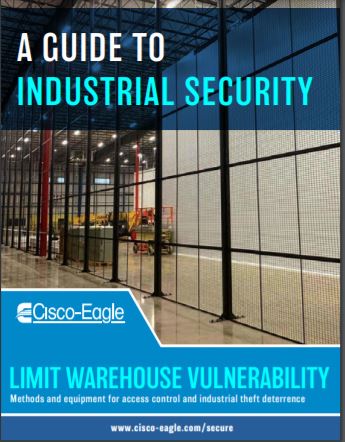Factors for Storage Area Security
How can you guard warehouse inventory against employee theft?
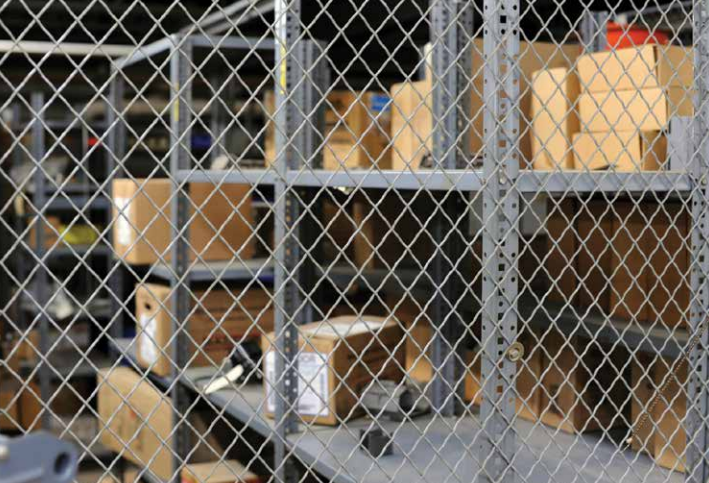
Although security experts agree that dock areas are probably the largest security concern in a warehousing operation, storage and picking areas are also a problem. What are some things you can do to reduce your pilferage risks?
Security is difficult when access is universal
In fact, security is impossible when people who should not be in an area have easy access to it. In a warehouse environment, that’s sometimes difficult due to the fact that so many order pickers, forklift drivers, management personnel, visitors and others need access at various times. But you can control it at least to some degree.
Know what to guard
First, let’s talk about what gets pilfered. While a 100-pound component can be stolen, it’s usually smaller items. We lay that out in our warehouse security white paper:
“When a product has a high per pound value, is easily disposed of through selling, trading or pawning, and is an enjoyable item to own, you have all the ingredients for theft.”
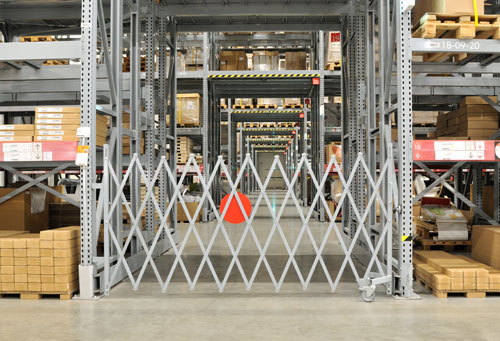
Above: using gates to control access to a guarded area.
The factors for restricting inventory access
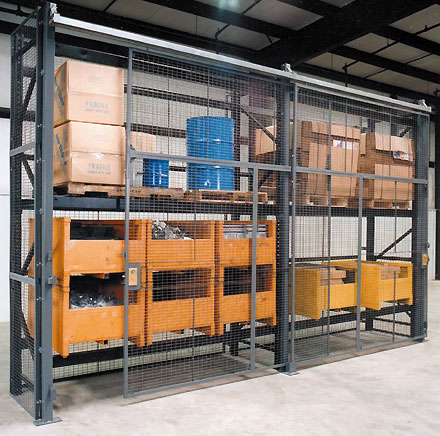
- Is it valuable, desirable or potentially something people can easily sell?
- Is it transportable? Is it so large that taking it becomes difficult?
- Can it be easily concealed and transported?
- Can you segment it from stock that’s not a target?
A good example of valued, concealable, desirable inventory is tobacco products in a grocery distribution center. Cigarettes are small, easy to hide, and easy to move. They are a high-priority target, so they should be secured differently than, say, bags of dog food or cases of paper towels — things that aren’t that expensive, not as desirable, and not as easy to hide, transport or sell.
People who are inclined to steal may target dog food and tissues, but their opportunities to do so are limited by the size of the items and the relatively low cost per ounce. Grocery distribution companies typically segment tobacco and guard access to it for that reason.
What are the high-potential pilferage targets in warehouses and industrial facilities?
Anything that’s small, easy to conceal, has some value to sell, or is desirable to people working in your facility. What are some of the known, highly desirable and frequently targeted items?
- Alcohol – due to its relatively high value, desirability and package or bottle sizes
- Tools and instruments – high value, low weight, compact sizes. Tools are a frequent pilferage target.
- Electronics or electrical components – particularly those that command value when sold or be in demand as consumer devices
- Medication or pharmaceuticals – these are in a different class in terms of security due to DEA regulations on some items. Specialty cages must be used to secure them.
- Cannabis or marijuana in medical or recreational dispensaries – since the legalization of medical and recreational marijuana in many states, security has become.
- High-value foods – in grocery distribution, tobacco tends to be the top target, but other valuable or desirable foods are always a target.
- Jewelry – compact, easy to conceal and typically very valuable.
- Firearms or ammunition – prices on guns and ammunition are always high, and many times inventories are low. Ammunition in production and distribution facilities must be secured for safety reasons as well as theft prevention.
Think of it this way: can someone easily remove, conceal, use or sell this item? Is it something people want, something that’s expensive, something that’s dangerous? If so, consider access restrictions. The cost-per-ounce measure should dictate security priorities
Methods for segmenting high-value inventory
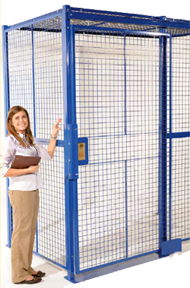
- Store it in upper bay storage rack slots: This is effective particularly for bulk storage of smaller items. Don’t store pallets on the ground so that anyone walking near can cut a case open. Bulk storage should be in high bay positions where a forklift or order picker is needed to access them. This creates a barrier because it uses location to reduce access.
- Store valuable inventory or tools in security cages: Lockable security cages are relatively inexpensive and can be built to work in most any space. Rows of shelving or racks can be segmented away into secure areas, where only authorized personnel can travel. You can even designate card reader locks and other measures that help you identify who was in or out of the secure areas.
- Make your rack secure: If your storage area is such that you cannot create a freestanding cage, you can also build in security to racks by using rack cages. Almost any teardrop style pallet rack can be made secure if it contains high-value inventory.
- Utilize modular storage: If your inventory is typically stored in shelving or racks, you can add lockable modular storage drawers to segment particularly valuable items. Many times, these systems are used to segment smaller, more valuable components from bin storage areas.
- Use smaller cages: There are many types of security lockers and small cages (some on wheels) that can be locked to protect inventory.
- Consider automation: Some automated systems, like industrial carousels or vertical lift modules, enhance security because product is controlled through the carousel, and difficult to access without authorization.
- Track worker traffic: Coded ID badges can be required to enter your secure areas, giving you intelligence on who has access to the controlled area.
- Lay out storage zones for access control: You can restrict zones by laying them out so they aren’t in main traffic ways and have limited egress points. If you have a higher value area, don’t place it in the center of your warehouse where everyone has access.
Read our white paper
Check out our warehouse loss prevention white paper for more information. You can also see our extensive security equipment section for details, specifications, video and detailed information.
Download our free guide to warehouse security
Every facility deals with inventory, tool and personal security. You want to maintain access for high-value items while also limiting availability to only those that really need to handle them. Our new guide to industrial security is here to help you find the right security options to fit your operations.
Download the guide today
Tags: Industrial Security, wire mesh security cages, secure storage, distribution center pilferage, access control
Scott Stone is Cisco-Eagle's Vice President of Marketing with 35 years of experience in material handling, warehousing and industrial operations. His work is published in multiple industry journals an websites on a variety of warehousing topics. He writes about automation, warehousing, safety, manufacturing and other areas of concern for industrial operations and those who operate them.




